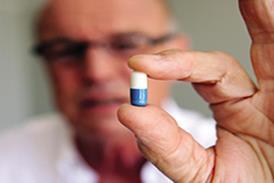An HSJ and Mölnlycke roundtable discusses how the NHS can improve infection control and prevention in the operating theatre – and the benefits of greater focus on this area
Read the full longform guide here
Panel
Alastair McLellan, editor, HSJ – chair
John Timmons, Mölnlycke international medical director
Linda Dempster, head of infection control, NHS England and NHS Improvement
Lucy Everett, matron and lead for infection prevention and control, Royal Brompton and Harefield Foundation Trust (representing the Royal College of Nursing)
Lindsay Keeley, patient safety and quality lead, the Association of Perioperative Practice
Mr Graham Whiteley, Association of Laparoscopic Surgeons of Britain and Ireland audit director
Professor John Skinner, honorary treasurer, British Orthopaedic Association and council member, Royal College of Surgeons
Phil Adams-Howell, clinical procurement lead, University College London Hospitals Foundation trust
Introduction
In association with
Thousands of patients each week have their lives saved or improved by surgery. But the operating theatre is also an environment where people can be at risk from infection.
Cutting into the body, removing tissue and implanting a new joint or other prosthesis will always carry risks – especially as the patient cohort becomes increasingly complex with more co-morbidities. Hospitals and surgical teams want to reduce those risks as much as possible.
But what needs to be done to reduce the risk of infection – both in terms of clinical practice and in areas such as procurement? An HSJ roundtable went looking for answers. The discussion included buying equipment which was best value rather than just the cheapest option, the use of data, educating health professionals and behaviour and culture.


























